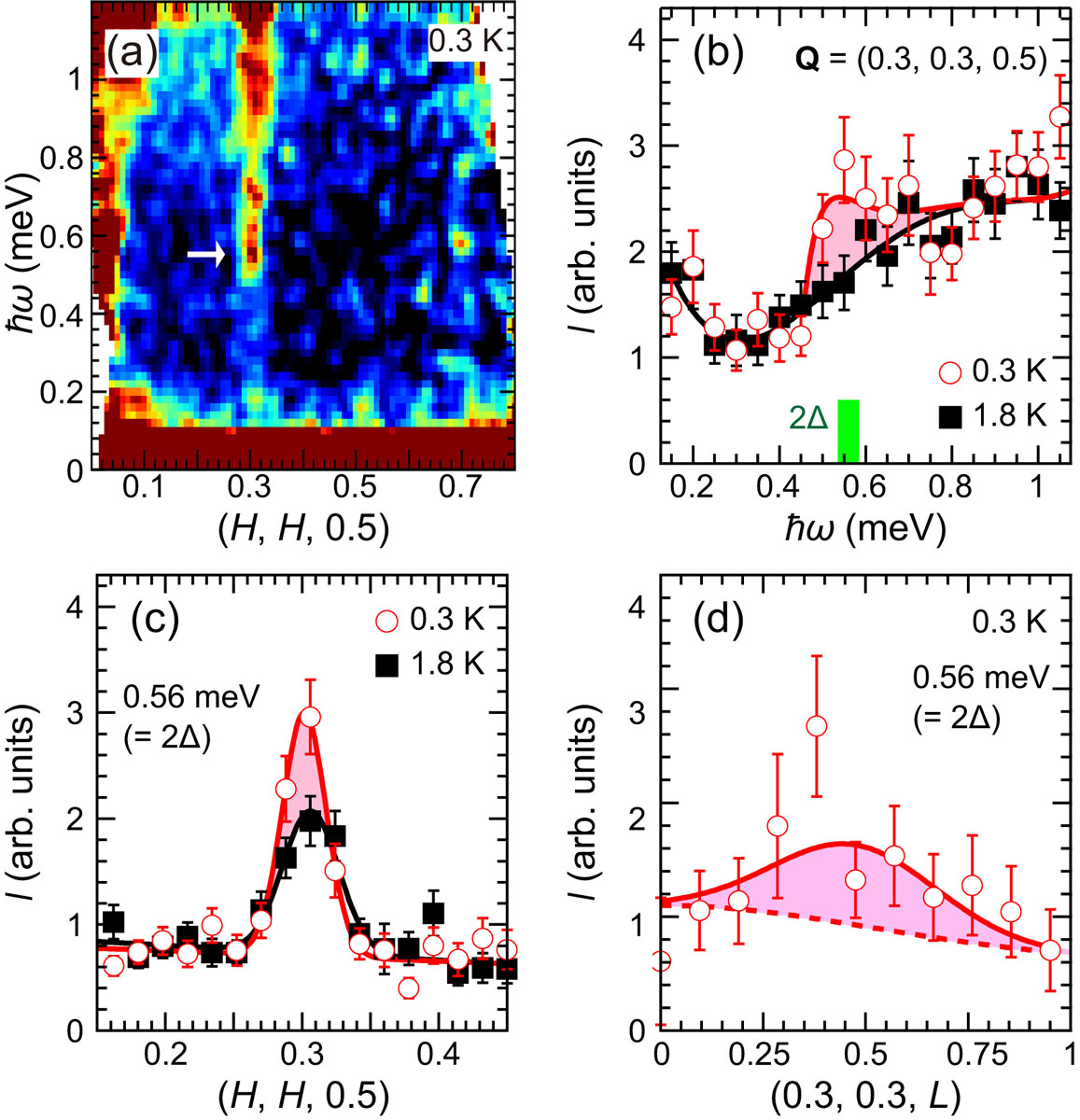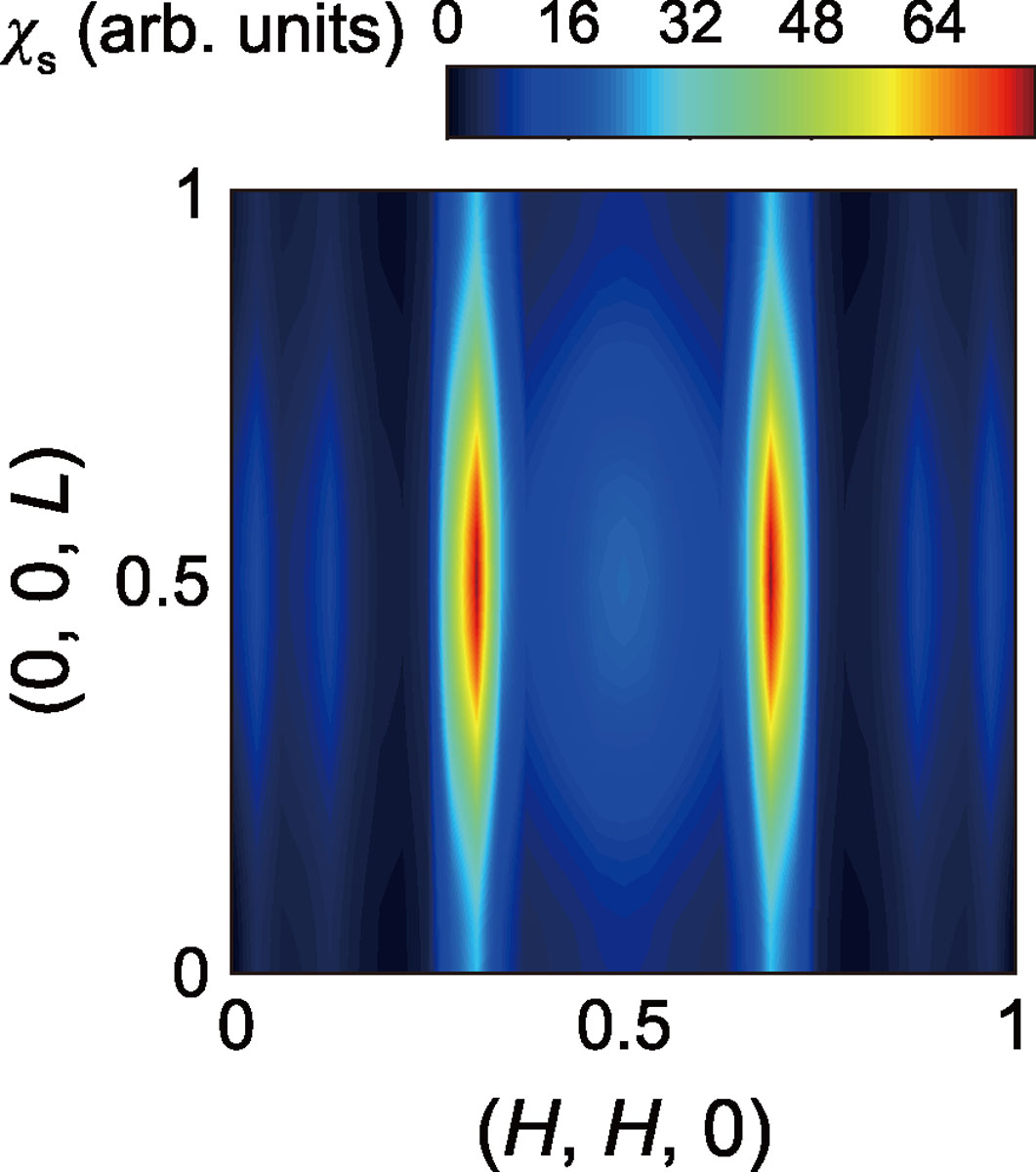Neutron Spin Resonance and Horizontal Line Nodes in Sr2RuO4
K. Iida, K. Suzuki, and T. Masuda
Sr2RuO4 with Tc = 1.5 K has attracted a great deal of interest as the prime candidate for the chiral p-wave superconductor. Recently, however, experimental and theoretical studies under an application of uniaxial pressure along <100> reported a factor of 2.3 enhancement of Tc, raising the possibility of an even-parity spin-singlet order parameter in Sr2RuO4 [1]. More recently, new NMR results demonstrated that the spin susceptibility substantially drops below Tc, ruling out the chiral-p spin-triplet superconductivity [2]. As such, these recent works turn the research on Sr2RuO4 towards a fascinating new era. So far, various experimental techniques reported that the superconducting gaps of Sr2RuO4 have line nodes, but the details of the line nodes, e.g. of the vertical or horizontal nature, are not uncovered yet. Since the complete information of the superconducting gaps can shed light on the symmetry of the pairing, exclusive determination of the direction of the line nodes in Sr2RuO4 is highly desirable. To investigate in detail the superconducting gap, we performed the high-resolution inelastic neutron scattering (INS) measurements and random phase approximation (RPA) calculations.
Three single crystals were co-aligned with the (HHL) plane been horizontal to the scattering plane using the high-energy x-ray Laue diffractometer installed at ISSP. We performed INS measurements at 0.3 and 1.8 K using the disk chopper time-of-flight neutron spectrometer AMATERAS installed at J-PARC.
The most pronounced magnetic signal in the normal state of Sr2RuO4 is nearly two-dimensional incommensurate (IC) magnetic fluctuations at QIC = (0.3, 0.3, L) owing to the Fermi surface nesting between (or within) the quasi-one-dimensional α and β sheets [3]. We focused on the low-energy IC magnetic fluctuations in Sr2RuO4 below and above Tc to search a spin resonance as the feedback effect from the superconducting gaps. We observed a spin resonance with energy of ћωres = 0.56 meV centered at a characteristic wavevector Qres = (0.3, 0.3, 0.5) (Figs. 1(a)–1(c)). The resonance energy corresponds well to the superconducting gap 2Δ = 0.56 meV estimated by the tunneling spectroscopy. In addition, the spin resonance shows the L modulation with a maximum at around L = 0.5 (Fig. 1(d)), indicating the three-dimensional gap structure.

Fig. 1. (a) Low-energy INS intensity maps regarding the IC magnetic fluctuations in Sr2RuO4 along (H, H, 0.5). (b) I(ћω) cuts at Q = (0.3, 0.3, 0.5) below and above Tc. (c) I(Q) cuts along Q = (H, H, 0.5) at 0.3 and 1.8 K with the energy window of 0.56 meV. (d) I(Q) cut along Q = (0.3, 0.3, L) at 0.3 K with the energy window of 0.56 meV.
To theoretically elucidate the origin of the L modulated intensity of the spin resonance in Sr2RuO4, RPA calculations assuming the horizontal line nodes at the superconducting gaps were also performed. Figure 2 illustrates the calculated dynamical spin susceptibilities for energy ћω = 2Δ0. The dynamical spin susceptibility shows the maximum at Q = (1/3, 1/3, 0.5) and (2/3, 2/3, 0.5). The superconducting gaps with the horizontal line nodes give such the feature along L, which is indeed observed in our INS measurements (Fig. 1(d)).
The L modulation of the spin resonance and our RPA calculations indicate that the superconducting gaps regarding the quasi-one-dimensional α and β sheets at the Fermi surfaces have the horizontal line nodes [4]. These results may set a strong constraint on the pairing symmetry of Sr2RuO4.
References
- [1] A. Steppke et al., Science 355, eaaf9398 (2017).
- [2] A. Pustogow et al., Nature (London) 574, 72 (2019).
- [3] K. Iida et al., Phys. Rev. B 84, 060402(R) (2011).
- [4] K. Iida et al., J. Phys. Soc. Jpn. 89, 053702 (2020).

